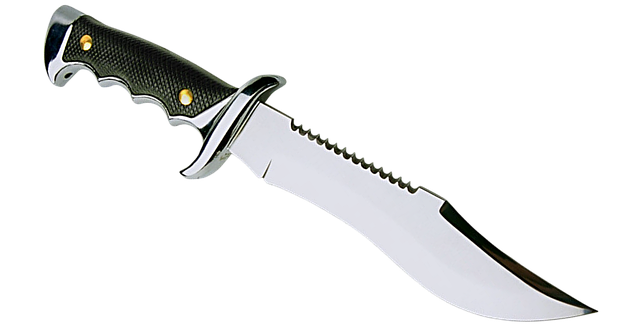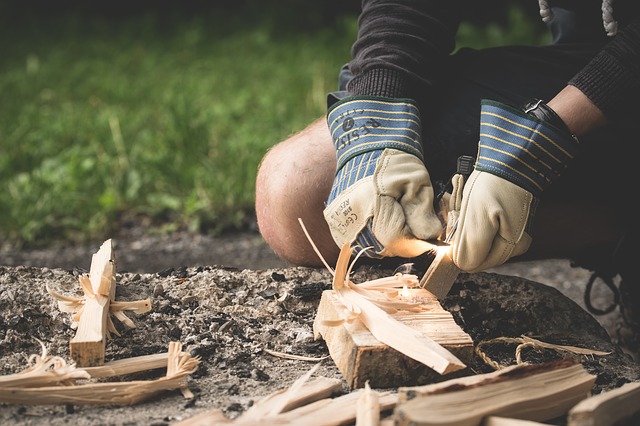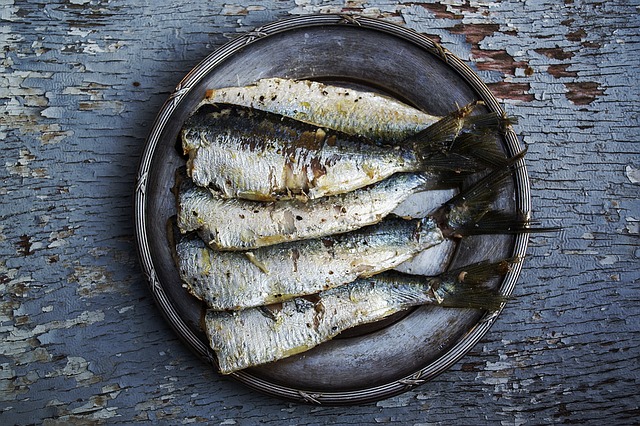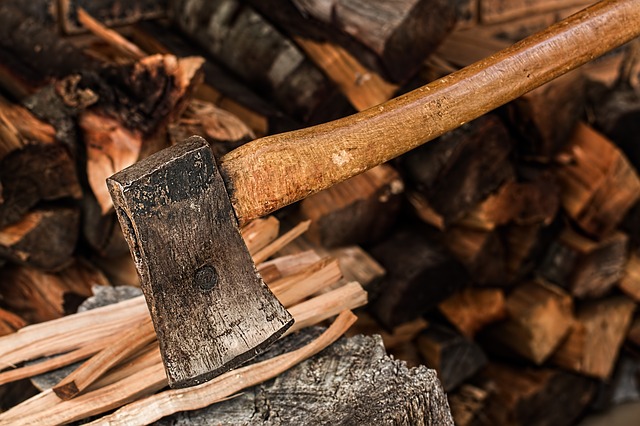
There are a wide range of different skills that you need to have in your arsenal of survival tricks, and knowing how to use and craft with a knife is one of the most IMPORTANT skills you could possibly have, especially if you’re lost in the wilderness for months on end, even if you know some knife skills, learning extra bushcraft tricks is an invaluable skill to have.
Knowing how to craft different items and tools can keep your mind busy while keeping your insanity and making the whole event much easier!
Your knife is essentially a life saver, and if you can have one on you at all times, I highly recommended you do it, because you never know when an extreme situation might hit you.
Essential Knife Skills 101
Fire Starting

If you haven’t yet got yourself a bushcraft knife, make sure you get a knife that can ignite a ferro rod – which is one of the easiest way to start a fire (not including a lighter or matches).
Ferro rods can be used thousands of times, so learning the ability to create fire is a valuable asset to have and something you don’t want to skip learning.
Crafting Tools
Humans are advanced creatures because of our ability to use tools, how do you think the cavemen survived all those years? We can also learn how to craft tools from the basic materials Mother Nature has provided us, such as rocks, trees, vines and weeds etc.
This is another must-have skill to learn.
Some awesome items you can craft:
- Kitchen set (spoon, forks, containers, bowls)
- Weapons (spears, axes/hatchet, bow and arrows)
- Miscellaneous (cooking tripod, flax baskets, bench/worktable)
- Traps for catching food
As you can see this is just a few out of hundreds of items you can craft JUST from using a basic item like the bushcraft knife.
Building Shelter
For those who may or may not know, shelter building can be a time-consuming task and a hard one if you don’t know how to build properly and efficiently.
A basic item like the knife (assuming you have a full tang construction blade) can help with this task and make a huge difference in your shelter building.
Shelter crafting ideas:
- Cutting and gathering cordage
- Slicing small trees, branches or boughs to use for your shelter
- Chopping out undergrowth in the area you want to build
- Craft and sharpen stakes
- Notching intersecting branches and limbs to stabilize your cordage, which help stop your cordage from slipping and moving
Knowing where and where NOT to place your shelter is survival living 101. Don’t build your shelter in a valley or ravine, which is more likely to collect rain
You’re more likely to have a better experience by setting up next to a huge rock face, or a warm tree that’s been in the sun all day and likely to release that heat at night.
Pro Tip: Gaining as much knowledge as possible in regards to bushcraft survival is an invaluable skill to have, because if it comes to the crunch – it could mean the difference between life and death and you have a family waiting for you back at home. So learn, learn, learn and become a great outdoors man.
Important Notes
Of course you can never be too prepared when it comes to outdoor living/surviving, below you will find more information about some of the common knife skills.
Chopping Wood
Only recommended if you have a full tang construction blade, because if you don’t, the force will likely be too hard on the knife and there’s a chance you could loosen the handle or worse, damage the entire knife.
Learn how to chop firewood with your fully fledged construction blade and show everyone how much of a bad ass you really are!
Cordage
With cordage, you can craft a hell of a lot of items that will help you survive, some common cordage materials will be long, strong and flexible (vines/weeds are commonly used).
Food Preparation
Knives are vital to use in the kitchen, however your bushcraft knife is not really of good use here (too big and bulky). Although the Kershaw Leek pocket knife does make a great food prepper, stylish, slim and sharp, what more could you want?
Hunting
Make sure you know the laws of your country, because there’s been too many people getting in serious trouble lately with hunting the wrong animals.
Abide by the law and you’ll have a great time. After you have shot an animal for your meal (probably with a gun or bow and arrow if you’re more advanced), you can then grab your knife and make the final killing blow.
If you don’t know how to do this then I recommend you go with someone that will show you how to do it because learning hands on is 10x faster than just reading about it.
Fishing

Your knife works wonders in the outdoor world, gutting, filleting and deboning a fish is a great skill to learn and a lot of fun.
It’s not something for you to learn and keep for yourself, the fantastic thing about fishing is that you can pass down your knowledge to your kids and create unforgettable memories for you and them while you go fishing together.
Knife Products I Recommend
Whether you’re a beginner or advanced knife handler, you can never go wrong with the Morakniv Fixed Blade. Sitting at a price of $13 I wouldn’t miss it for the world. Affordable, comfortable, high quality and gets the job done.
However if you’re not interested in a bulky bushcraft knife and would like something more Every Day Carry, the Kershaw Leek Knife might be more your cuppa tea. A bit more on the expensive side ($39), but just as sharp, durable, stylish, and contains an assisted opening feature so you can swiftly ready the blade using one hand, for any activity.
Conclusion
Knowing many bushcraft knife skills is an incredible asset to have.
With a world FULL of city goers and work junkies who never have any time to learn new things or get out and explore the outdoors, you are part of the few % who enjoy primitive survival and that is one of the best things in this world, to have the ability of crafting survival tools, building natural shelters and having general outdoor fun is a something you don’t want to let go of!



